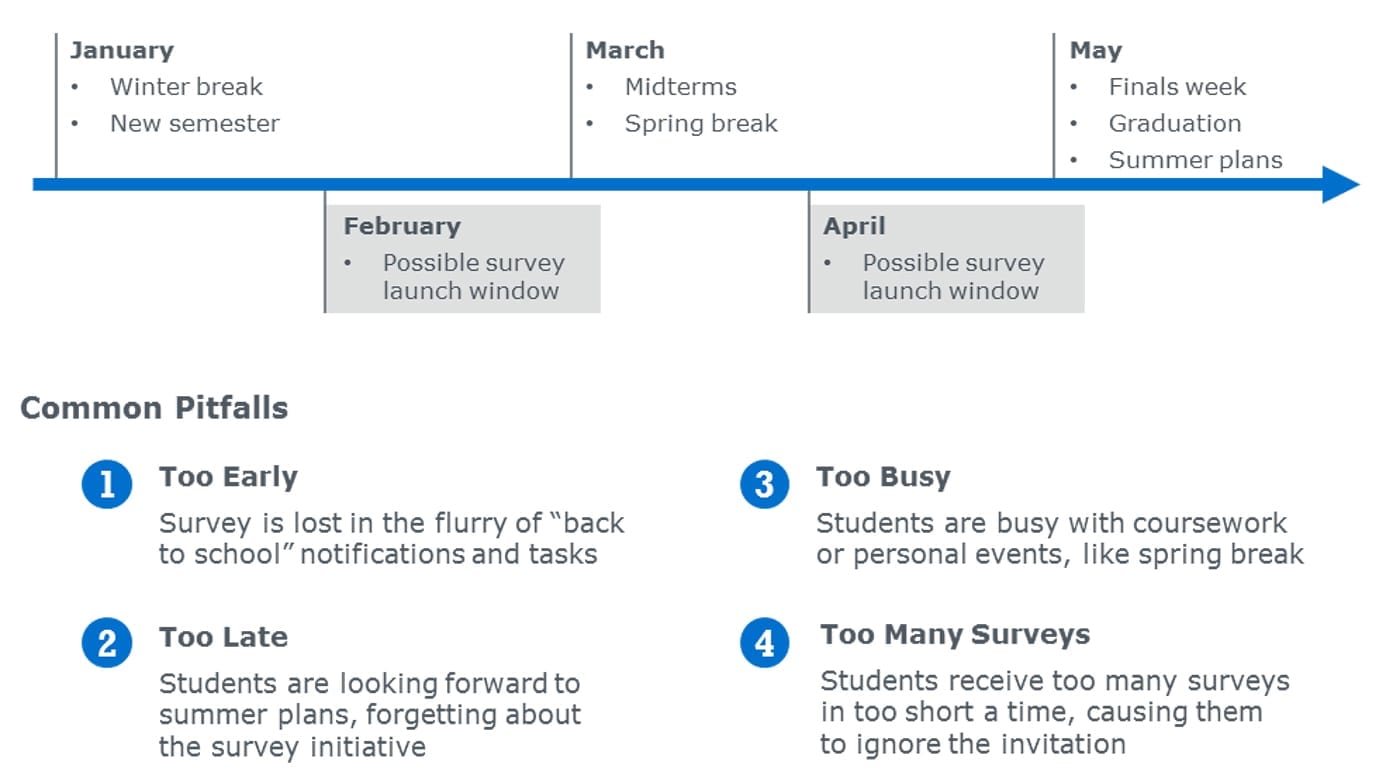It’s common practice for facilities to measure and track customer satisfaction with grounds, maintenance, and custodial services. However, poor survey timing, low response rates, and uncertainty about which metrics to measure can all inhibit a survey from providing useful customer service data that can inform facilities leaders’ decisions.
To ensure you capture actionable information, here are five best practices you can use to improve your customer service satisfaction survey.
1. Time your survey carefully
Every department on campus wants more feedback from students, faculty, and staff. Facilities departments, which typically send out surveys annually, must compete with other departments for respondents’ attention. Facilities leaders need to coordinate with other departments to ensure recipients aren’t inundated with multiple surveys. This practice helps ensure that the facilities survey takes center stage when it’s sent.
In addition, you need to time your survey delivery so it’s not sent during busy times of the year, such as holidays or exam season.
Potential Survey Timeline

2. Include demographic information questions
While all feedback is valuable, there are certain constituents whose feedback provides greater insight. When you deploy your institution’s survey consider which group feedback is most valuable. At a foundational level, you can filter results through institutional affiliation (e.g., faculty, staff, student). Consider how different students segments will impact your survey results.
Are you interested in learning if freshman and seniors feel differently about campus cleanliness? If so, ask students to provide their year. Be aware that specific demographic information you request might change over time.
3. Limit the number of questions
Studies on survey effectiveness show that longer surveys yield lower response rates. A SurveyMonkey study found that as the length of a survey increases, respondents spend less time on each question, which leads to an overall reduction in data accuracy. In addition, researchers concluded that completion rates drop significantly if it takes more than seven or eight minutes to complete.
Prioritize your most important survey questions and eliminate any unnecessary ones. To guide this practice, first decide the specific services or areas of campus that are of the most interest to you.
4. Offer incentives for completion
Recipients are more likely to respond to a survey if there’s an incentive to participate. There are a broad range of incentives you can offer, which offer varying degrees of effectiveness that are illustrated below.
Incentives for Completion

Use the following checklist to determine and implement the appropriate incentives:
- Determine your overall budget
- Identify which incentives will resonate most with respondents
- Ensure incentives are easy to distribute (e.g., online gift card codes versus cash)
- Create electronic form to collect respondent contact information that protects respondent anonymity (talk to your IT department if you’re unsure how to set this up)
- Distribute incentives during or immediately after the survey
5. Share findings and an action plan
Once the survey is complete, it’s important to communicate survey results across campus (this includes both respondents and senior leaders). Decide on a timeline to disseminate the results before you deploy the survey. Here are a few potential questions to consider with your results dissemination plan:
Timeline
- How long will it take to analyze the data?
- When can the community expect to see the findings?
Review
- What findings should be shared?
- Who should review the findings before they are shared?
- Who should the findings be shared with?
Access
- How should the findings be shared?
- What campus and community partners could help quickly disseminate the survey findings?
- How can interested groups access the findings and information about the survey in the future?
Once you decide on a plan to address any problems by the survey, share that plan with your campus. There are a handful of options for how you can share the results, including a written report, email blast, press release, infographic, and dedicated webpage.